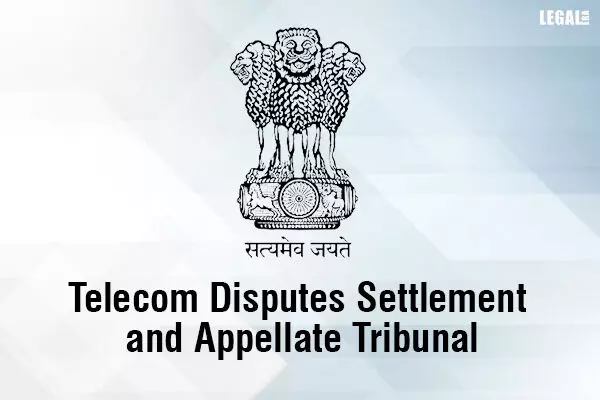- Home
- News
- Articles+
- Aerospace
- Artificial Intelligence
- Agriculture
- Alternate Dispute Resolution
- Arbitration & Mediation
- Banking and Finance
- Bankruptcy
- Book Review
- Bribery & Corruption
- Commercial Litigation
- Competition Law
- Conference Reports
- Consumer Products
- Contract
- Corporate Governance
- Corporate Law
- Covid-19
- Cryptocurrency
- Cybersecurity
- Data Protection
- Defence
- Digital Economy
- E-commerce
- Employment Law
- Energy and Natural Resources
- Entertainment and Sports Law
- Environmental Law
- Environmental, Social, and Governance
- Foreign Direct Investment
- Food and Beverage
- Gaming
- Health Care
- IBC Diaries
- In Focus
- Inclusion & Diversity
- Insurance Law
- Intellectual Property
- International Law
- IP & Tech Era
- Know the Law
- Labour Laws
- Law & Policy and Regulation
- Litigation
- Litigation Funding
- Manufacturing
- Mergers & Acquisitions
- NFTs
- Privacy
- Private Equity
- Project Finance
- Real Estate
- Risk and Compliance
- Student Corner
- Take On Board
- Tax
- Technology Media and Telecom
- Tributes
- Viewpoint
- Zoom In
- Law Firms
- In-House
- Rankings
- E-Magazine
- Legal Era TV
- Events
- Middle East
- Africa
- News
- Articles
- Aerospace
- Artificial Intelligence
- Agriculture
- Alternate Dispute Resolution
- Arbitration & Mediation
- Banking and Finance
- Bankruptcy
- Book Review
- Bribery & Corruption
- Commercial Litigation
- Competition Law
- Conference Reports
- Consumer Products
- Contract
- Corporate Governance
- Corporate Law
- Covid-19
- Cryptocurrency
- Cybersecurity
- Data Protection
- Defence
- Digital Economy
- E-commerce
- Employment Law
- Energy and Natural Resources
- Entertainment and Sports Law
- Environmental Law
- Environmental, Social, and Governance
- Foreign Direct Investment
- Food and Beverage
- Gaming
- Health Care
- IBC Diaries
- In Focus
- Inclusion & Diversity
- Insurance Law
- Intellectual Property
- International Law
- IP & Tech Era
- Know the Law
- Labour Laws
- Law & Policy and Regulation
- Litigation
- Litigation Funding
- Manufacturing
- Mergers & Acquisitions
- NFTs
- Privacy
- Private Equity
- Project Finance
- Real Estate
- Risk and Compliance
- Student Corner
- Take On Board
- Tax
- Technology Media and Telecom
- Tributes
- Viewpoint
- Zoom In
- Law Firms
- In-House
- Rankings
- E-Magazine
- Legal Era TV
- Events
- Middle East
- Africa
TDSAT Clarifies Government Permission Or License Not Required By OTT Platforms

TDSAT Clarifies Government Permission Or License Not Required By OTT Platforms
Adds that these are regulated under the Information Technology Act, 2000, and the associated 2021 Rules
The Telecom Disputes Settlement and Appellate Tribunal (TDSAT) has ruled that Over-the-Top (OTT) platforms, such as streaming services, fall outside the purview of the Telecom Regulatory Authority of India (TRAI) Act.
The All-India Digital Cable Federation (AIDCF) filed a petition against STAR India Pvt Ltd, accusing the latter of discriminatory practices in streaming ICC Cricket World Cup matches on its Disney+Hotstar platform.
The bench comprising Justice Dhirubhai Naranbhai Patel (Judicial Member) and Subodh Kumar Gupta (Member) made a prima facie observation that OTT platforms were not classified as TV channels. Therefore, no permission or license was required from the Central government.
It added that these platforms were regulated under the Information Technology Act, 2000, and the associated 2021 Rules.
The tribunal acknowledged the ongoing regulatory consultations by the Telecom Regulatory Authority of India (TRAI) to determine the regulatory framework for OTT platforms.
While admitting the broadcasting petition filed by AIDCF, the TDSAT, however, refrained from granting interim relief to the federation. It asserted that no prima facie case was established and no evident irreparable loss to the petitioner was submitted as proof.
The tribunal highlighted that it was open for the petitioner to maintain a list of consumers subscribing to the Star Sports channel on their platform, considering that the same content was available on Disney+Hotstar.
The ruling assumes significance in the context of the evolving legal landscape surrounding digital content distribution platforms and their differentiated regulatory status compared to conventional television channels.



